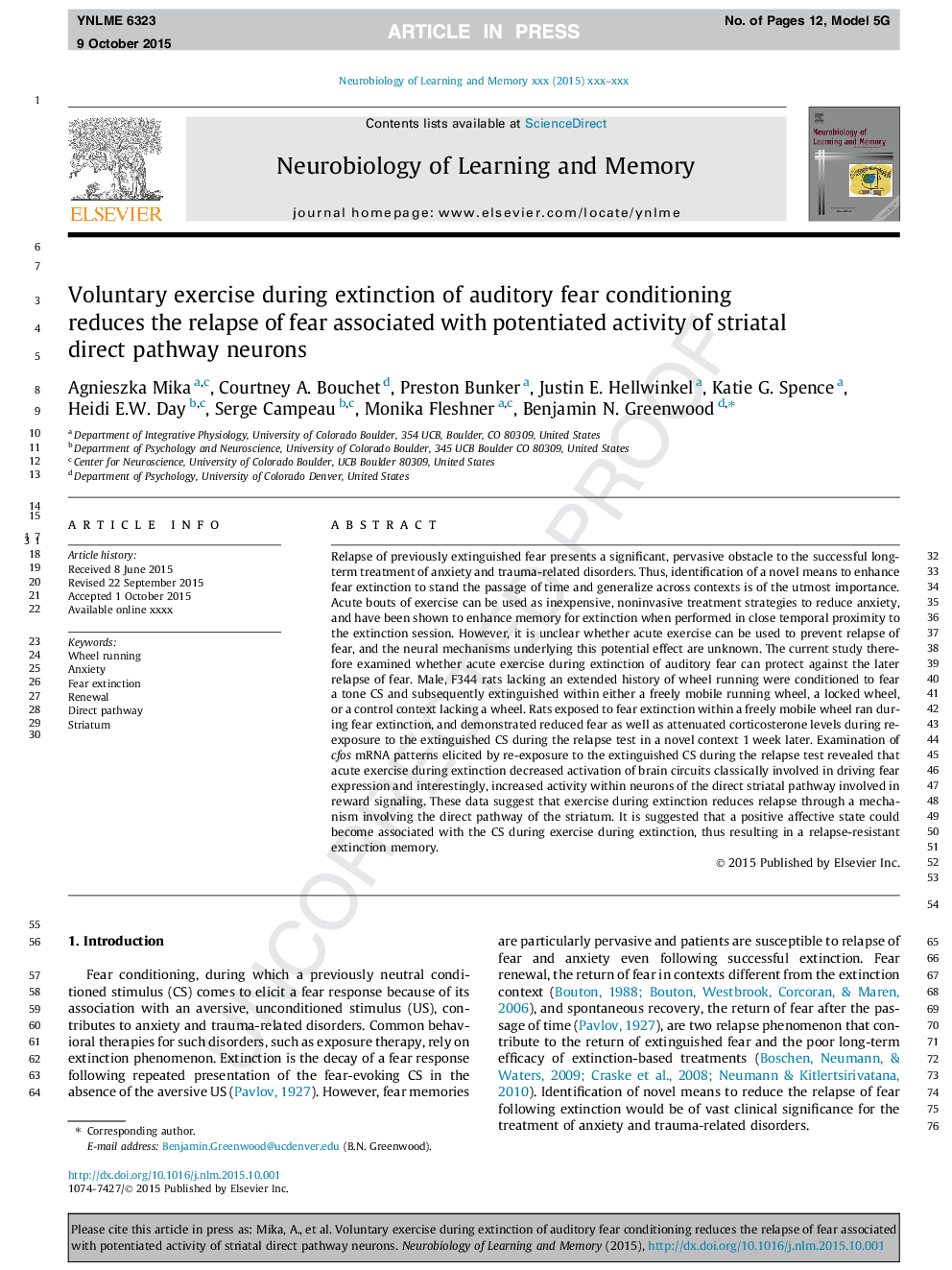| کد مقاله | کد نشریه | سال انتشار | مقاله انگلیسی | نسخه تمام متن |
|---|---|---|---|---|
| 7299372 | 1475150 | 2015 | 12 صفحه PDF | دانلود رایگان |
عنوان انگلیسی مقاله ISI
Voluntary exercise during extinction of auditory fear conditioning reduces the relapse of fear associated with potentiated activity of striatal direct pathway neurons
ترجمه فارسی عنوان
تمرین داوطلبانه در حین انقراض تهدید ترس شنوایی، تسریع ترس مرتبط با فعالیت پتانسیل نورونی مسیر مستقیم استریاتال را کاهش می دهد
دانلود مقاله + سفارش ترجمه
دانلود مقاله ISI انگلیسی
رایگان برای ایرانیان
کلمات کلیدی
موضوعات مرتبط
علوم زیستی و بیوفناوری
علم عصب شناسی
علوم اعصاب رفتاری
چکیده انگلیسی
Relapse of previously extinguished fear presents a significant, pervasive obstacle to the successful long-term treatment of anxiety and trauma-related disorders. Thus, identification of a novel means to enhance fear extinction to stand the passage of time and generalize across contexts is of the utmost importance. Acute bouts of exercise can be used as inexpensive, noninvasive treatment strategies to reduce anxiety, and have been shown to enhance memory for extinction when performed in close temporal proximity to the extinction session. However, it is unclear whether acute exercise can be used to prevent relapse of fear, and the neural mechanisms underlying this potential effect are unknown. The current study therefore examined whether acute exercise during extinction of auditory fear can protect against the later relapse of fear. Male F344 rats lacking an extended history of wheel running were conditioned to fear a tone CS and subsequently extinguished within either a freely mobile running wheel, a locked wheel, or a control context lacking a wheel. Rats exposed to fear extinction within a freely mobile wheel ran during fear extinction, and demonstrated reduced fear as well as attenuated corticosterone levels during re-exposure to the extinguished CS during the relapse test in a novel context 1Â week later. Examination of cfos mRNA patterns elicited by re-exposure to the extinguished CS during the relapse test revealed that acute exercise during extinction decreased activation of brain circuits classically involved in driving fear expression and interestingly, increased activity within neurons of the direct striatal pathway involved in reward signaling. These data suggest that exercise during extinction reduces relapse through a mechanism involving the direct pathway of the striatum. It is suggested that a positive affective state could become associated with the CS during exercise during extinction, thus resulting in a relapse-resistant extinction memory.
ناشر
Database: Elsevier - ScienceDirect (ساینس دایرکت)
Journal: Neurobiology of Learning and Memory - Volume 125, November 2015, Pages 224-235
Journal: Neurobiology of Learning and Memory - Volume 125, November 2015, Pages 224-235
نویسندگان
Agnieszka Mika, Courtney A. Bouchet, Preston Bunker, Justin E. Hellwinkel, Katie G. Spence, Heidi E.W. Day, Serge Campeau, Monika Fleshner, Benjamin N. Greenwood,
